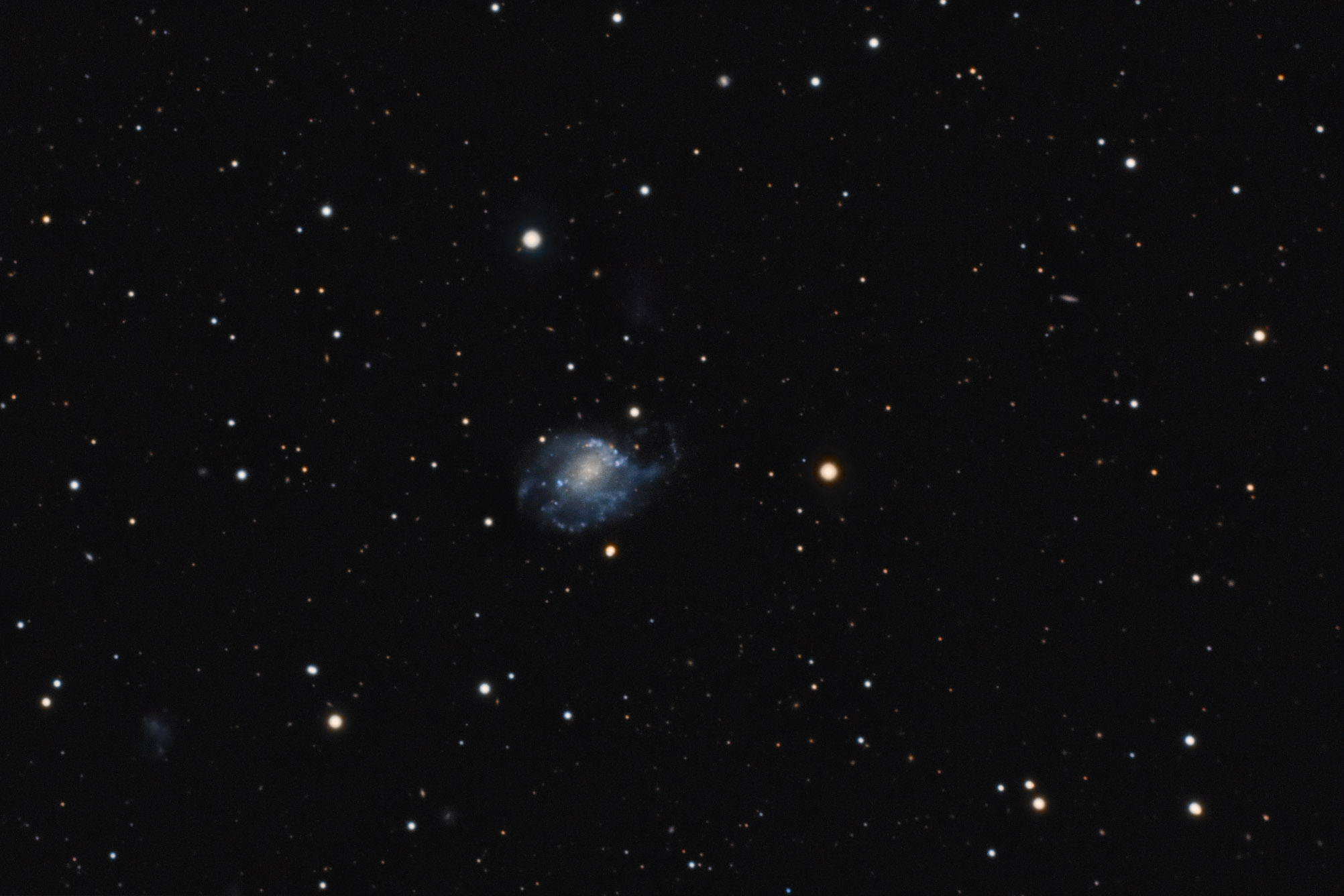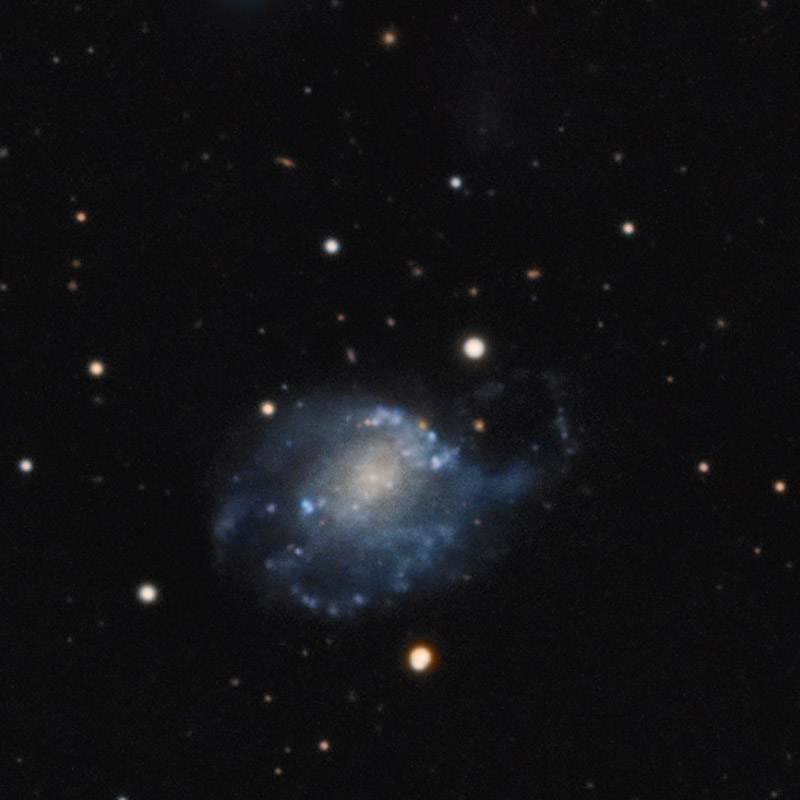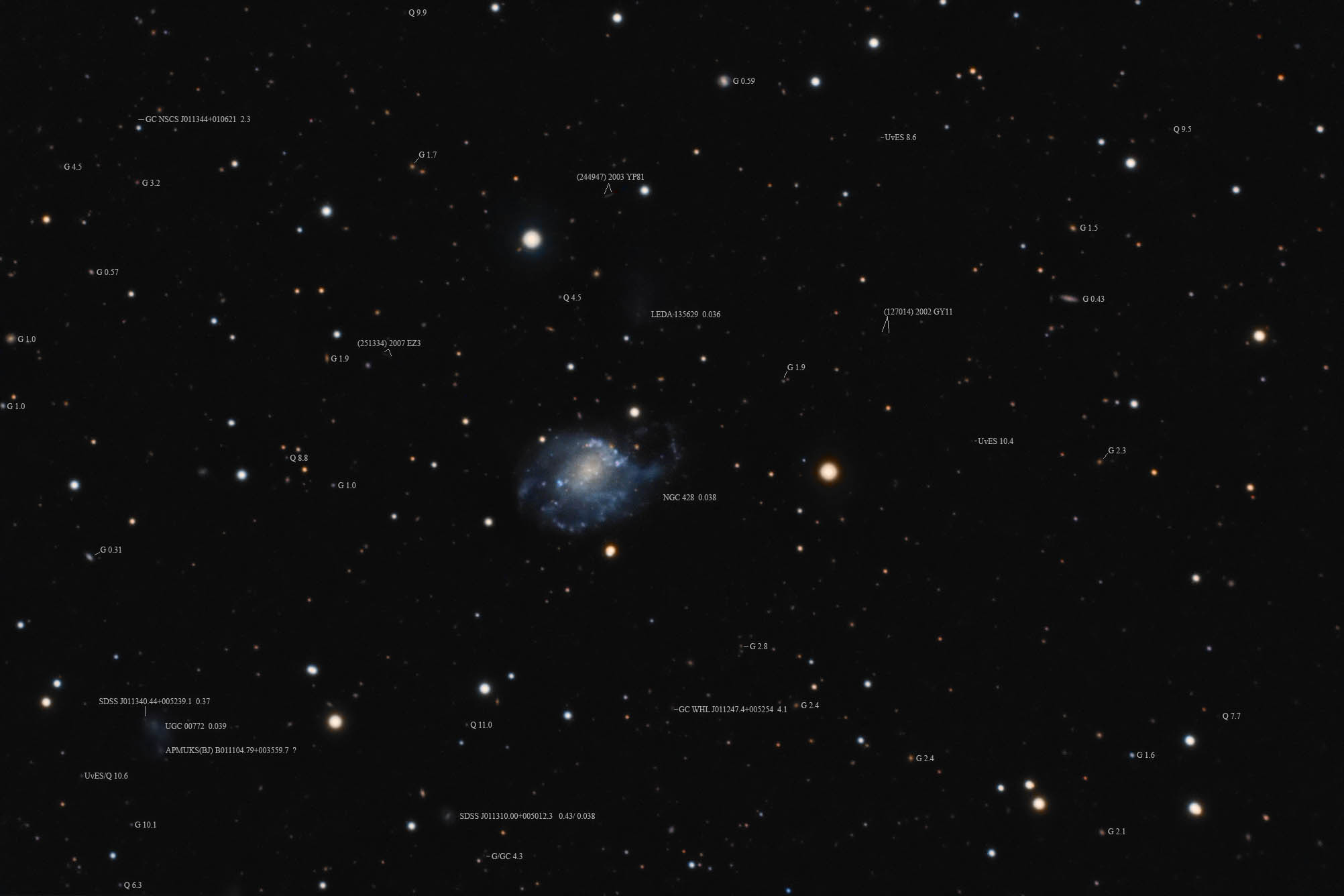Object name: NGC0428 NGC 428 is one odd looking galaxy in Cetus. Redshift puts it 38 million light-years away. Unfortunately, the error bar of redshift is at least this great meaning it could be twice as distant. In fact, Tully-Fisher measurements put it between 45 and 54 million light-years distant. The longer estimate may be the more accurate. It is classed as SAB(s)m with HII emission. Galaxies of the Magellan class tend to look rather messed up. Are they naturally this way is the question. I see one note at NED that says; "Two bar-like bright regions suggest that an interaction may be occurring, and one of the bars has more bright knots than the other. The galaxy is not detected at radio wavelengths by NH." Usually, if there's interaction involved you'd expect rather high radio activity. If it is 50 million light-years distant it would be about 60,000 light-years across. If the redshift distance of is right then it is about 45,000 light-years across.
North of NGC 428 is the dwarf irregular galaxy LEDA 135629. It appears as a blue smudge. Was it torn apart by NGC 428? They have a similar redshift. But the galaxy looks rather typical of its type so I doubt any interaction. Still, they make an interesting pair. NGC 428 was discovered by William Herschel on December 20, 1786 but isn't in either H400 program.
Galaxy cluster WHL J011247.4+005254 is south of NGC 428. Its position is within a second of arc of a galaxy that is not listed at NED. Still, I think it likely the anchor of the cluster. The cluster is listed as having 12 members in a 1.38 minute diameter circle. Several other faint galaxies are within this area. Another galaxy cluster is at the bottom of the image a bit left of NGC 428. It, GMBCG J018.27683+00.82032 and the galaxy, GMBCG J018.27683+00.82032 BCG do have the same position. The cluster is listed as having 9 members with no size given. The galaxy cluster NSCS J011344+010621 is in the upper left corner at 2.3 billion light-years. NED shows it to have 19 members in a 2.65 minute circle.
SDSS J011310.00+005012.3, bottom center, has two very different redshifts given at NED. One puts it at about the same distance as NGC 428 while the other puts it nearly 400 million light-years further away. While it does seem to have a low surface brightness like others in the NGC 428 group I doubt the redshift measurement that puts it at the distance of NGC 428 can be right. NED also prefers the further distance.
Three asteroids are in the image:
(251334) 2007 EZ3 at magnitude 19.5
(244947) 2003 YP81 at magnitude 18.6
(127014) 2002 GY11 at magnitude 20
As usual, the annotated image shows the light travel time distance to all objects in the field that NED had the needed data. Labels are immediately right of the object unless a line is drawn to the object. Also, I included catalog names for objects likely part of the same group as NGC 428 as well as galaxy clusters. Interestingly, all galaxies in the vicinity of NGC 428 are dwarf irregular galaxies of very low surface brightness. While far larger NGC 428 is considered a low surface brightness galaxy that has little regular structure same as its traveling companions. There were quite a few noted quasars and UvES objects (likely quasars) in the field which are noted by a Q or the UvES label and their light travel time distance.
14" LX200R @ f/10, L=4x10' RGB=2x10'x3, STL-11000XM, Paramount ME Related Designation(s):2MASS J01125575+0058534, 2MASX J01125570+0058536, APMUKS(BJ) B011021.33+004307.8, CGCG 0110.4+0043, CGCG 385-028, HIPASS J0112+00, IRAS 01103+0043, IRAS F01103+0043, LQAC 018+000 014, MCG +00-04-036, NGC 0428, NGC0428, NSA 062237, NVSS J011254+005922, PGC 004367, SDSS J011255.77+005853.4, UGC 00763, UM 309, UZC J011255.7+005853, [TCW2007] 011, | | 

